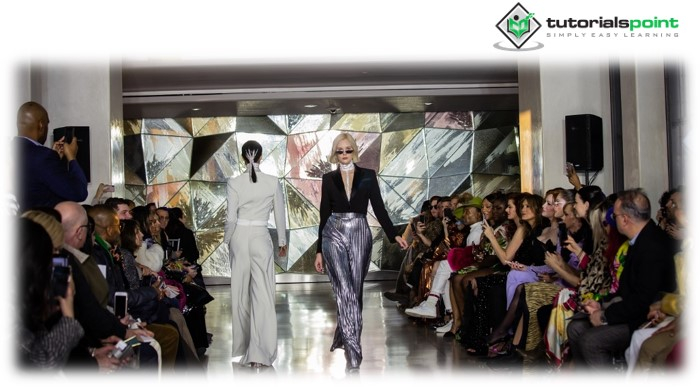

New York Fashion Week (NYFW) is a biannual event that takes place in February and September of each year. It was made so that designers could preview their collections for fashion editors, journalists, store buyers, celebrities, and customers by showcasing their works through presentations and runway shows. In addition to attracting visitors from all over the world, including models, celebrities, and everyday people just interested in getting a sneak peek at the newest fashion trends, New York Fashion Week also causes the city to become overrun with pop-up stores, store events, and photographers’ eager to capture the city’s renowned street style.

In New York Fashion Week, buyers, the press, and the general public are shown global fashion collections. Along with Milan Fashion Week, Paris Fashion Week, London Fashion Week, and New York Fashion Week, it is one of the “Big 4” global fashion weeks. The idea of a consolidated “New York Fashion Week” was invented in 1993 by the Council of Fashion Designers of America (CFDA). New York Fashion Week is produced by a number of companies, including IMG, The Society Fashion Week, FTL Moda in collaboration with Fashion Week Online, Style 360, Art Hearts Fashion, Style Fashion Week, and ASC Fashion Week. An estimate of $887 million goes toward the economic impact of New York Fashion Week. According to one study, New York Fashion Week contributes more than 900 million dollars to the city’s economy each year, attracting over 230,000 visitors and hosting over 300 shows over the course of 7-9 days. Menswear now has its own separate fashion week, dubbed New York Fashion Week: Men’s, in addition to the current NYFW. The CFDA is promoting that event, which is also held every two years.
Eleanor Lambert, the press director for the New York Dress Institute, the first advertising agency for the American fashion business, founded the first New York Fashion Week in 1943. She was born in Indiana, studied sculpture in Indianapolis and Chicago, and then came to New York City in 1925, where she had a major impact on American fashion. A strong personality who started her work in public relations in the art world, she assisted in founding the New York Dress Institute in 1941. Following this in 1943 was another invention called “press week.” Paris had been the epicentre of fashion before the Second World War. In order to divert attention from French fashion during World War II, when fashion industry insiders were unable to go to Paris to witness French fashion displays, the world’s first organised fashion week, known as “Press Week,” was established. Additionally, it was intended to highlight American designers for fashion journalists who had overlooked American fashion breakthroughs.
After the triumph of Press Week, American fashion was widely featured in Vogue and other fashion journals that were often dominated by French designers. The occasion became known as “Press Week of New York” by the middle of the 1950s. The 16th annual New York Press Week was held in the spring of 1951 (February 1951). The French capital essentially set trends because many US-based fashion brands copied what initially appeared across the Atlantic. The Americans did, however, have the opportunity to build their own names as designers as the war dragged on and the Germans continued to dominate Paris.
American designers like Claire McCardell, Hattie Carnegie, and Norman Norell were among many who were finally recognised in publications like Vogue and Harper’s Bazaar, demonstrating the importance of homegrown fashion talent. Ruth Finley would start the challenging process of organising what became known as the fashion calendar two years later, in 1945, making sure that designers’ show schedules didn’t conflict and offering spectators a convenient, pink-paged itinerary. She would play that part for about 70 years.
There are two New York Fashion Weeks each year. Once each September for the spring/summer collection and once more in February for the fall/winter collection Eleanor Lambert, the advertising director of the New York Dress Institute, founded the first-ever New York Fashion Week, which took place in 1943. Men’s New York Fashion Week is held twice a year, once in July and once in late January or early February.
Prior to Fall 2015, New York Fashion Week was held in the Lincoln Center under the sponsorship of Mercedes-Benz. Skylight Clarkson Square and Skylight Moynihan Station were the two new main venues after WME/IMG took over, with the first serving as the primary location for New York Fashion Week.With a few other performances dispersed across downtown Manhattan, Chelsea Piers and the Park Avenue Armory have also grown to be well-liked venues for performances and events. Famous locations include the Museum of Modern Art, which hosted Carolina Herrera’s spring 2018 show, or the Hammerstein Ballroom, which hosted Marc Jacobs’ spring 2017 show.
New York is getting ready to take the reins as fashion month gets ready to spin once more. Since Helmut Lang, who moved to New York in 1998, opted to completely redefine the fashion year by exhibiting in September rather than the customary November, it has been the first of the “Big Four” fashion capitals. The Big Apple then set the tone for the upcoming season as other designers imitated them. However, the origins of New York Fashion Week can be traced all the way back to the Second World War, passing through nightclubs with deteriorating ceilings and plenty of spectacle.
According to past trends, many brands and fashion designers, such as Michael Kors, Tory Burch, Proenza Schouler, Christian Siriano, Brandon Maxwell, and many others, are expected to return to NYFW, while others, such as Tom Ford, Thom Browne, Marc Jacobs, and Rodarte, may choose not to. In addition to fundamentally altering the nature of Fashion Week, the global explosion in street style and blogging also expanded how fashion was broadcast and distributed.